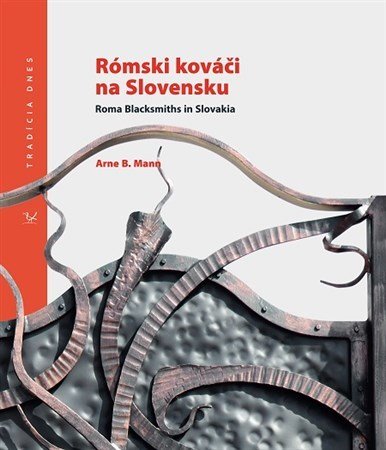Roma Blacksmiths in Slovakia

- MANN, Arne, B.: Rómski kováči na Slovensku - Roma Blacksmiths in Slovakia. Ústredie ľudovej umeleckej výroby, Bratislava 2018, 400 s.
Blacksmithing and music performed by the Roma met with the interest of the majority population and enabled the Roma during the 16th-18th century to move to a permanently settled way of life. This is the exceptional importance of this craft for both the Roma and the majority population. The technology of metal processing was brought by the Roma from the Indian subcontinent. This is evidenced by elements in work technology (such as forging on the ground) and the tools used (such as a pair of leather sacks), which are still used in India by supposed relatives of European Roma. Romani blacksmiths focused on the production of products that were not produced by local non-Romani blacksmiths and therefore there was no competition between them. Until the middle of the 20th century, these were mainly special nails used in folk architecture such as rafter nails, shingle nails, U-shaped and railway nails, tools for farmers (blades, chains, axes), also for coopers, dipper makers, carpenters, wheelwrights, shingle makers, winegrowers and also household items (knives, chisels, tripods), whetstones for fire starting, animal traps, etc.), even a musical instrument – Jew ´s harp (drumbľa in Slovak). Using the example of folklore (songs, proverbs), the author shows that Romani blacksmiths were esteemed both by members of their community and by the majority population. The publication traces the development of Roma blacksmithing since the middle of the 20th century, when cheap factory products dampened interest in blacksmiths’ products, and therefore Roma blacksmiths maintained their craft by creating blacksmith workshops, later focusing on artistic blacksmithing.
Keywords:
Roma, blacksmithing, folklore